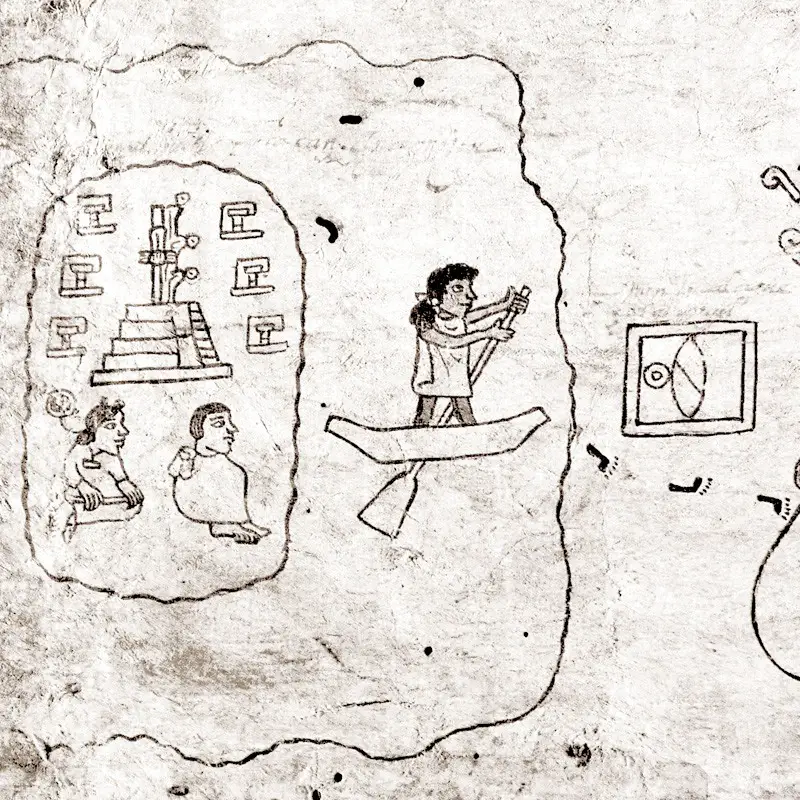YouTube Video Here: https://www.youtube.com/embed/Qt2GYyGTXTs?feature=oembed&enablejsapi=1
While Aztlan —the legendary ancestral home of the Aztec peoples— has still not been identified, it has been described as an ISLAND. Curiously, many researchers agree that Aztlan means: “place of whiteness.”What if there was a strange connection among Atlantis, Aztlan and the icy continent of Antarctica?
Aztlan is the legendary ancestral home of the Aztec people. This legendary place is mentioned in numerous ethnohistorical sources which date back thousands of years. Today, experts are unsure whether Aztlan was real, or whether the place is purely mythical or represents a historical reality.
However, many researchers agree that Aztlan wasn’t a myth, and in order to find it, we need to listen to what the ancients were trying to tell us.
Antarctica, Atlantis and Aztlan—a mysterious connection?
While the are numerous interpretations of the meaning of Aztlan, many researchers agree that Aztlan means: “place of whiteness.”
Others believe that the word Aztlan means the land to the north. However, the true meaning is heavily debated.
Even though Aztlan has still not been physically identified by scholars, it has been described as an ISLAND. An interesting painting –created by an unknown Aztek—from the 16th century and found in the codex Borurini illustrates how the ancient Aztecs depart in a boat from Aztlan towards their new home; Teotihuacan. See image below.

But what if Aztlan and Antarctica are connected somehow?
What if there is more to Antarctica than what we are currently aware of? Ever since the discovery of Antarctica, researchers, adventurers and scientists have wondered what the now icy continent may hide beneath its thick layers of ice.
Interestingly, experts have discovered recently –using the dating method of Dr. W.D. Urry. from the Carnegie Institution in Washington D.C.— that Antarctica’s rivers, sources of fine-dispersed deposits, were flowing as depicted on The Orontius Finaeus map, about 6,000 years ago. About 4000 years B. C., glacial sediments started to accumulate.
However, the Orontius Finaeus map is just one of the many ancient maps that indicate history as we know it may have been presented to us incorrectly.
Looking at the ancient Piri Reis map –which is basically a collection of much older maps— we see that ancient seafarers knew about Antarctica hundreds if not thousands of years ago.
These ancient maps seem to suggest the possibility that in the near past, Antarctica may have looked much different than it does now.
What if the search for Atlantis and Aztlan is the same as many authors and researchers have argued in the past? What if Aztlan and Atlantis are the same, and they all are connected to the now-icy continent of Antarctica?
Even though Plato was the first to postulate the existence of the lost city-continent of Atlantis, we must understand that many Native American legends are reminiscent of what Plato sustained in the distant past, reinforcing the suspicion that Atlantis could have existed on Earth, and was not just a myth or creation of Plato.
The legends of Native Americans come from different cultures separated by vast distances and isolated from one another.
However, all of them tell a similar story of a once fallen civilization that existed in the distant past.
In Central America, this ancient culture lived in Aztlan. According to legends, Aztlan was located to the south, on a white island and perished without warning as a result of natural catastrophic events.
Many researchers maintain that Aztlan means “place of whiteness.” This is why it has commonly been connected to Atlantis and Antarctica, suggesting that Aztlan might have been the mythical Atlantis, the mythical place located to the south.
It is said that after the catastrophic events, the survivors of Atlantis fled to different continents where their ancient civilization ultimately merged with others and disappeared.
If we look at the history of Antarctica, we will learn that Antarctica wasn’t always located where it is today.
In fact, in the distant past, the continent of Antarctica wasn’t located at the South Pole, but instead somewhere between it and the Equator of our planet.
This means that Antarctica was located farther north and experienced a tropical or temperate climate, meaning that it was covered in forests, and inhabited by various ancient life forms.